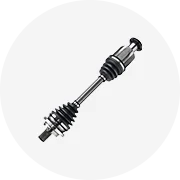





Venda quente Lâmina De Limpador De Pára-brisas Do Carro 12 -28 Polegadas Limpador De Pára-brisas Para Lâmina De Limpador Universal
€ 0,1589 - € 0,5046
Pedido Mínimo: 50 Peças






Película solar para janela de pára-brisas 88% Vlt, camaleão vermelho, matiz de janela 1x30m/rolo, camaleão vermelho, para carro, rolha
€ 191,55 - € 233,59
Pedido Mínimo: 1 Rolo







Limpador de carro multifuncional OEM de fábrica, lâmina de limpador de borracha de silicone sem osso para caminhões, lâmina de 12-28 polegadas

€ 0,7475 - € 1,03
Pedido Mínimo: 50 Peças







Venda quente liga de alumínio caravan motohome, reboque, rv, janela deslizante
€ 51,39 - € 55,13
Pedido Mínimo: 1 Peça







Chat comigo e obtenha amostra grátis! filme autoadesivo para vidro de pára-brisa filme solar camaleão com mudança de cor
€ 194,35 - € 214,91
Pedido Mínimo: 1 Rolo







Preço de vidro blindado à prova de balas para para-brisa dianteiro de veículos, vidro blindado à prova de balas para carros
€ 213,04 - € 319,55
Pedido Mínimo: 2 Metros quadrados













Toyota camry vidro para-brisa frontal, fabricante laminado com 2006-2011 2.4g
€ 21,50 - € 24,30
Pedido Mínimo: 50 Peças






Melhor Caminhão Do Carro Para 2017-2018 Nissan Patrol Pára-brisas Sun Sombra Deflector Vento Visor Chuva Guarda Porta Janela Com Chrome
€ 8,41 - € 11,22
Pedido Mínimo: 2 Conjuntos


Viseira de porta com proteção solar, proteção contra o sol, para-brisa, para nissan patrol, gu, y61 97-19
Pronto para enviar
€ 3,28 - € 4,21
Pedido Mínimo: 50 Conjuntos
Envio por peça: € 5,70






Nissan Patrol SUV Car Auto Vidro Pára-brisa Dianteiro Porta Retrovisor Triângulo Quarto Montagem Teto Solar Panor
€ 186,88
Pedido Mínimo: 5 Peças






Windshield Wiper Blades Arm for nissan rogue x-trail navarra sentra sunny kicks altima tiida patrol TEANA MAXIMA SYLPHY MARCH
Pronto para enviar
€ 0,2804 - € 0,3738
Pedido Mínimo: 100 Peças
Envio por peça: € 14,29
Principais categorias
Sobre pára-brisas patrulha nissan
pára-brisas patrulha nissan pode salvar seu veículo de vários danos distintos e adicionar uma camada extra de segurança a ele. Alibaba.com apresenta algumas das peças de veículos mais eficientes e robustas, como esta coleção de. pára-brisas patrulha nissan, que são conhecidos por seu desempenho absoluto e taxas de confiabilidade mais altas. Estes. pára-brisas patrulha nissan estão disponíveis para todos os modelos de veículos e vêm com garantias de qualidade que eliminam qualquer ceticismo sobre os produtos. Visite o site agora e compre esses produtos em muitas promoções.
O. pára-brisas patrulha nissan que você pode descobrir aqui não são apenas de qualquer qualidade comum, mas acessíveis a partir de líderes. Fornecedores e atacadistas de pára-brisas patrulha nissan verificados e reconhecidos por seus produtos excepcionais. Esses produtos não só podem promover a aparência estética de seus veículos, mas também garantir que a parte dianteira e traseira do veículo esteja protegida de todos os tipos de impactos. Isso, por sua vez, não só salva seus veículos, mas também seus passageiros. Você pode encontrar muitas variações distintas destes. pára-brisas patrulha nissan que estão disponíveis a preços acessíveis.
Alibaba.com é o melhor lugar para encontrar peças de reposição para veículos e quando se trata de compra de ótima qualidade. pára-brisas patrulha nissan, as opções são variadas e extensas. Você pode encontrar confiável e resistente. pára-brisas patrulha nissan que pode suportar ou resistir a muita pressão e servir por muito tempo. Esses produtos impecáveis são certificados e geralmente feitos de materiais resistentes, como plástico rígido e alumínio, junto com outros metais duros como o ferro. Não importa o modelo do seu veículo, estes. pára-brisas patrulha nissan pode caber em todos os tipos de veículos.
Alibaba.com permite que você economize muito dinheiro ao oferecer uma infinidade de. pára-brisas patrulha nissan dependendo dos modelos e variações. Esses produtos estão disponíveis para pedidos OEM e você também pode optar por embalagens personalizadas. Os produtos são certificados ISO, CE, SGS e você pode desfrutar de negócios fascinantes sobre eles.
O. pára-brisas patrulha nissan que você pode descobrir aqui não são apenas de qualquer qualidade comum, mas acessíveis a partir de líderes. Fornecedores e atacadistas de pára-brisas patrulha nissan verificados e reconhecidos por seus produtos excepcionais. Esses produtos não só podem promover a aparência estética de seus veículos, mas também garantir que a parte dianteira e traseira do veículo esteja protegida de todos os tipos de impactos. Isso, por sua vez, não só salva seus veículos, mas também seus passageiros. Você pode encontrar muitas variações distintas destes. pára-brisas patrulha nissan que estão disponíveis a preços acessíveis.
Alibaba.com é o melhor lugar para encontrar peças de reposição para veículos e quando se trata de compra de ótima qualidade. pára-brisas patrulha nissan, as opções são variadas e extensas. Você pode encontrar confiável e resistente. pára-brisas patrulha nissan que pode suportar ou resistir a muita pressão e servir por muito tempo. Esses produtos impecáveis são certificados e geralmente feitos de materiais resistentes, como plástico rígido e alumínio, junto com outros metais duros como o ferro. Não importa o modelo do seu veículo, estes. pára-brisas patrulha nissan pode caber em todos os tipos de veículos.
Alibaba.com permite que você economize muito dinheiro ao oferecer uma infinidade de. pára-brisas patrulha nissan dependendo dos modelos e variações. Esses produtos estão disponíveis para pedidos OEM e você também pode optar por embalagens personalizadas. Os produtos são certificados ISO, CE, SGS e você pode desfrutar de negócios fascinantes sobre eles.
















